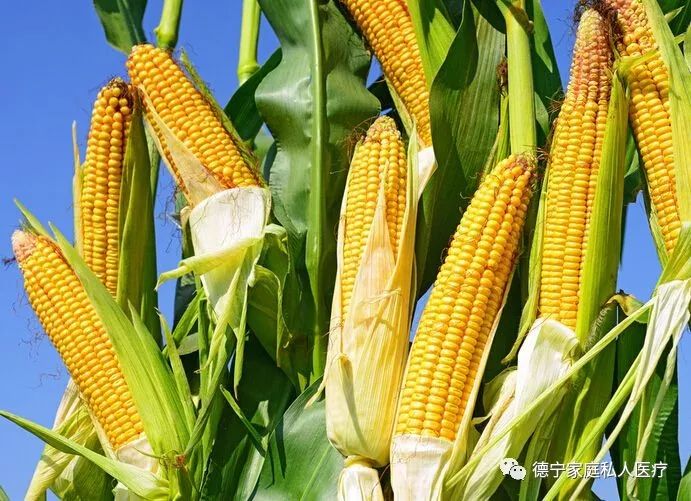In our daily lives, many people exhibit symptoms of damp-heat. So, what exactly is damp-heat, and how can one regulate a damp-heat constitution? What dietary choices can effectively alleviate these symptoms? Let’s explore this together.
What is Damp-Heat Constitution
Damp-heat constitution refers to a physical condition characterized primarily by the internal accumulation of damp-heat. The term “damp” refers to moisture, which can be categorized into external dampness and internal dampness: external dampness arises from humid climates, exposure to rain, or living in damp environments, leading to the invasion of external moisture into the body; internal dampness is a pathological product often related to digestive function.
The term “heat” refers to a type of heat pattern in Traditional Chinese Medicine (TCM). When dampness lingers without being transformed, it generates heat, resulting in damp-heat. Symptoms of damp-heat include oily skin, frequent acne and pimples, dry mouth, bitter taste, and in severe cases, morning bad breath, sticky stools, and yellowish urine. For instance, individuals living in humid areas or in climates with high temperature and humidity are prone to developing a damp-heat constitution. Additionally, those who enjoy sweet and greasy foods or consume alcohol regularly often belong to this category.

Characteristics of Damp-Heat Constitution
1. Heavy Dampness
From a TCM perspective, acne is caused by an increase in oily secretion, which inhibits the discharge of heat, leading to the accumulation of internal heat and the emergence of acne. The increased oiliness is what we refer to as “heavy dampness”; thus, strictly speaking, heavy internal dampness is a significant cause of acne.
2. Excessive Heat
Excessive heat can be expressed in two ways: one indicates that a person has a strong temper (fire); the other suggests that the individual frequently consumes heat-inducing foods, leading to toxin accumulation. Therefore, it is said that excessive heat can also cause acne. Generally, individuals with a damp-heat constitution tend to be irritable and easily angered. It is well-known that unstable emotions can also lead to the proliferation of acne. Furthermore, those with a damp-heat constitution often have a slightly overweight physique, move sluggishly, and have shiny skin, making them prone to acne and skin itchiness.
How to Regulate Damp-Heat Constitution
1. Avoid Spicy, Dry, and Stimulating Foods
Individuals with a damp-heat constitution should avoid spicy, dry, overly rich, and greasy foods, such as alcohol, cream, animal organs, chili, ginger, scallions, garlic, as well as warm foods like dog meat, deer meat, beef, lamb, bird’s nest, white fungus, pineapple, lychee, and mango.
2. Limit Sweet Foods and Avoid Smoking and Alcohol
Those with a damp-heat constitution should reduce their intake of sweet and salty foods to prevent exacerbating dampness and heat. It is also important to avoid overeating or extreme hunger, and to refrain from smoking and drinking alcohol, as these can generate dampness and heat. Additionally, it is advisable to limit the consumption of carbonated beverages.

3. Consume Cooling Foods, Fruits, and Vegetables
Individuals with a damp-heat constitution should eat more cooling foods that clear heat, detoxify, and dispel dampness, such as: coix seed (Yi Yi Ren), various melons, leafy greens, lotus root, mung beans, and kelp. For meat, opt for protein-rich foods like carp, rabbit meat, crucian carp, river snails, and loach; for vegetables, choose those rich in organic acids and trace elements, such as winter melon, loofah, gourd, bitter melon, cucumber, cabbage, celery, shepherd’s purse, cabbage, and various beans. Fruits like cantaloupe, loquat, orange, pear, and water chestnut are also recommended.
What Foods are Good for Damp-Heat Constitution
1. Winter Melon
Winter melon is a popular vegetable that not only has beautifying effects but also clears heat, promotes urination, reduces swelling, and alleviates thirst. It is suitable for conditions like heat-induced thirst, edema, difficulty urinating, and water retention.
2. Onion
Onions are rich in nutrients that help harmonize the stomach, dispel dampness, resolve phlegm, and detoxify. They are suitable for symptoms like chest tightness, nausea, excessive phlegm, and difficulty urinating.
3. Water Celery
Water celery is known for its blood pressure-lowering effects and also has cooling and diuretic properties, suitable for conditions like painful urination, hematuria, and leukorrhea.
4. Corn
Corn helps regulate the stomach, stimulate appetite, and promote diuresis, suitable for urinary stones, chronic nephritis edema, hypertension, and loss of appetite.

5. Purslane
Purslane has properties that clear heat, dispel dampness, and reduce swelling, suitable for acute enteritis, dysentery, hematuria, painful urination, jaundice, and gingivitis.
6. Broad Beans
Broad beans help strengthen the spleen, harmonize the stomach, and dispel summer heat and dampness, suitable for summer dampness-induced vomiting and diarrhea, spleen deficiency, and water retention.
7. Mung Beans
Mung beans have detoxifying, diuretic, and cooling properties. Drinking mung bean soup is beneficial for detoxification and reducing swelling, but avoid overcooking to preserve organic acids and vitamins.
8. Crucian Carp
Crucian carp helps strengthen the spleen and dispel dampness, suitable for spleen deficiency, loss of appetite, weakness, thirst, edema, and difficulty urinating.
Conclusion: Through this article, we understand that damp-heat constitution is characterized by the internal accumulation of damp-heat. However, there is no need to worry too much, as damp-heat constitution can be regulated through diet. Regular consumption of foods like onions, corn, and broad beans can effectively alleviate symptoms of damp-heat.


